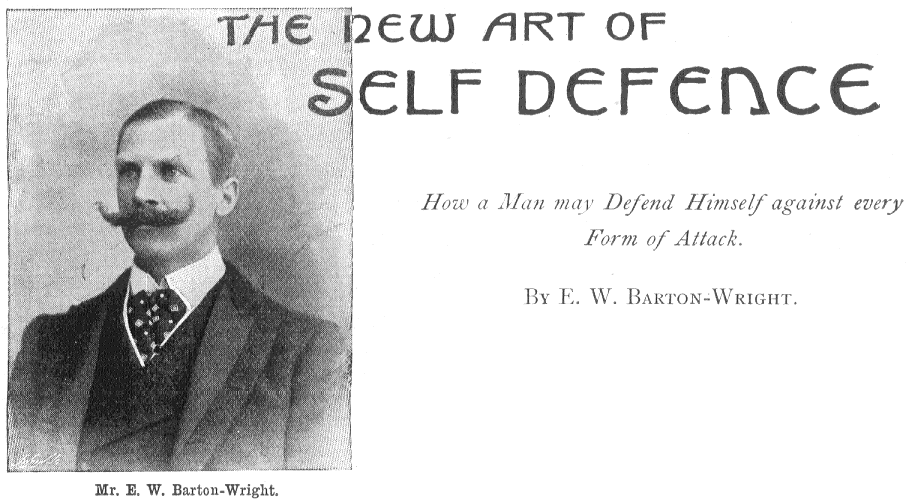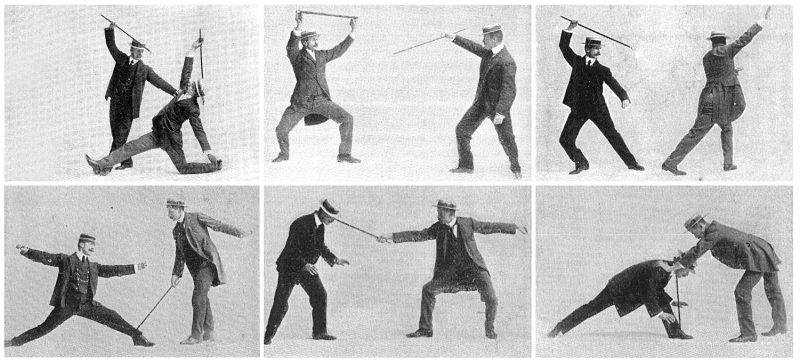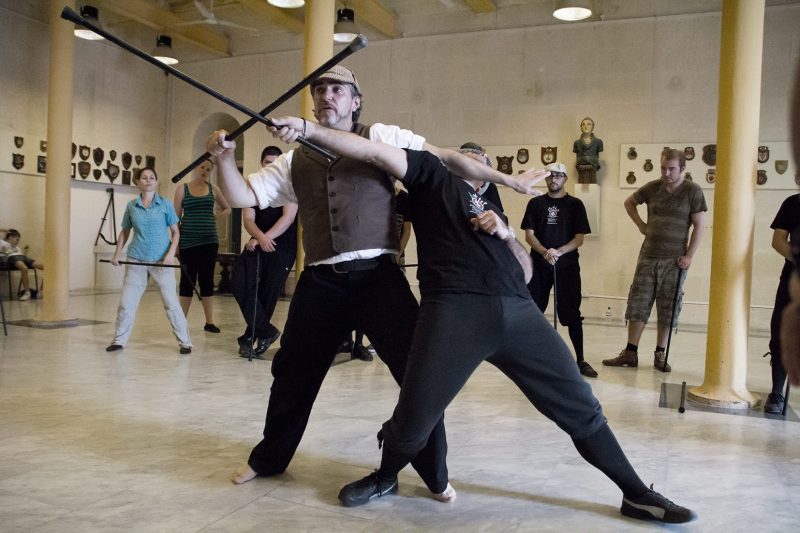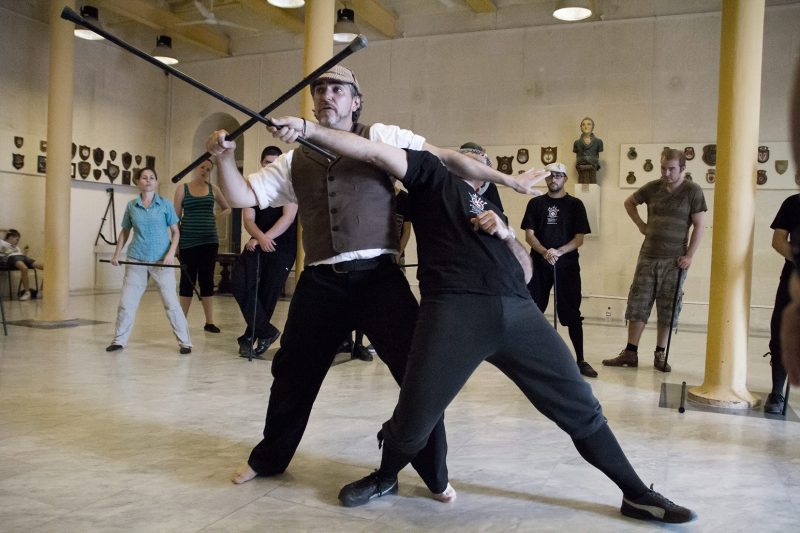Imagine yourself on the streets of London at the begining of the 19-th century. Imagine yourself attacked by a group of street hoolingans, what will you do in this situation? Today, you have a variety of martial arts from which you can choose and learn to protect yourself from an atacker. Back in those days, many of the oriental skills we know, had not still arived in Europe, but thanks to one man, thigs will start to change.
Edward Barton-Wright is a british civil engineer and one of the first Europeans to both learn and teach Japanese martial arts. He is also known as a pioneer of the concept of “hybrid martial arts.” Barton used to work in Japan from 1895 to 1898. During that time he had the oportunity to study a few Japanese martial arts such as jujutsu in at least two styles, including the Shinden Fudo Ryū in Kobe and Kodokan judo in Tokyo.

When he returned to Europe, in early 1898, Barton will use his knowledge of the Japanese martial arts, he will combine them and make his own self-defence martial art called “Bartitsu.” In bartitsu, he implemented techniques and elements of judo, jujitsu, British boxing and fighting with a walking stick. This new skill of his was a true orient and occident hybrid, tyical for the Victorian era.
In 1900, Barton opened the Bartitsu School of Arms and Physical Culture. The school ofered a variety of activities, such as classes in different self-defence dsciplines, combat sports and phiysical therapy too. In his sport club there were many members, which included soldiers, athletes, actors, politicians and also some aristocrtas. In the next 2 years, Barton Actively promoted the activities of his club by making exhibitions of self-defence techniques and organizing tournaments in which his Bartitsu champions were dueling with wrestlers in different Eurropean wrestling styles.
Unfortunately, in 1903, the school was closed and Barton focused on developing and pursuing his interest in physical therapy, although, there was a rumor that he continued giving private bartitsu lesson until the late 1920’s. His physial therapy business that specialized in applying electricity to threat ilnesses such as rheumatism were observed with scepticism and probably this is wht lead to his eventual bankrupcy. Very little is know for his live in the period from 1930 to 1950. Besides being remebered as the as the pioneer of Japanese martial arts in Europe, Barton died in 1951, aged ninety, unmarried and relatively poor.

Anyways, after he and the instructors moved on in 1903, bartitsu became a dying skill, really close to dissapearance. Luckily, it remaind allive and remembered and sir Arthur Conan Doyle is to blame for that. In a single paragraph in his 1903 Shrelock Holmes Novel, “Adventure of the Empty House”, Holmes calims that he defeated his worst enemy, Moriart using: “baritsu
It is not known why Arthur Conan Doyle misspelled the name of the skill (baritsu). Maybe because of copyright issues or peobably because the London Times did the same typo in 1900 and he used this as a reference.
Today, thanks to enthusiasts and martial art researchers, bartitsu is being revived and its popularity is again inceasing. The members of “The Bartitsu Society”, spent years of their time in thorough research through archives finding all available documents refering to bartitsu. They managed to make a more or less complete picture of this technique and put all the information about it on the inernet.
- To disturb the equilibrium of your assailant.
- To surprise him before he has time to regain his balance and use his strength.
- If necessary, to subject the joints of any parts of his body, whether neck, shoulder, elbow, wrist, back, knee, ankle, etc. to strains that they are anatomically and mechanically unable to resist.

At the end, the question is asked whether bartitsu can protect you from the dangers on the modern day streets?
